A SERIES OF WALKS ALONG THE EMBANKMENT
THIS PAGE IS PRODUCED IN CONJUNCTION WITH
DAVE HILL
VICTORIA EMBANKMENT GARDENS: PART SEVEN
 Hotel Cecil, Cleopatra’s Needle & The Main Gardens (with Band Stand)
Hotel Cecil, Cleopatra’s Needle & The Main Gardens (with Band Stand)
-oOo-
THE MINISTRY OF DEFENCE GARDENS
 The Ministry of Defence Building and Gardens from the air – part of Whitehall Court is shown at the bottom right corner; this photograph was taken by Sgt. Andy Malthouse RAF
The Ministry of Defence Building and Gardens from the air – part of Whitehall Court is shown at the bottom right corner; this photograph was taken by Sgt. Andy Malthouse RAF
-oOo-
The final section of the Victoria Embankment Gardens is named for the Ministry of Defence. The Gardens were lain out between 1939 and 1959 and are bound by Horseguards Avenue to the south, the Ministry of Defence building to the west and by Richmond Terrace to the south.
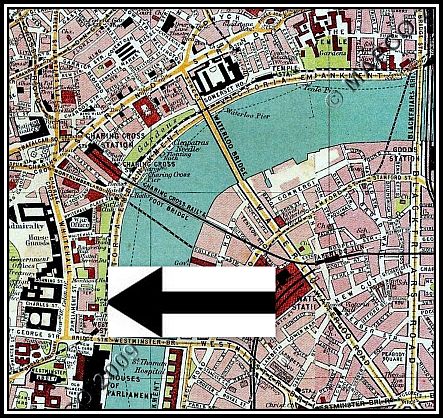 The Ministry of Defence Gardens
The Ministry of Defence Gardens
In the north west corner of The Gardens can be found the remains of the old Whitehall Steps, which is a remnant of the Tudor Palace once present here and which was discovered in 1939. The Steps, also known as the Queen Mary’s Steps, led down to the River Thames and the adjoining early 16th Century Thames Embankment revetment wall.
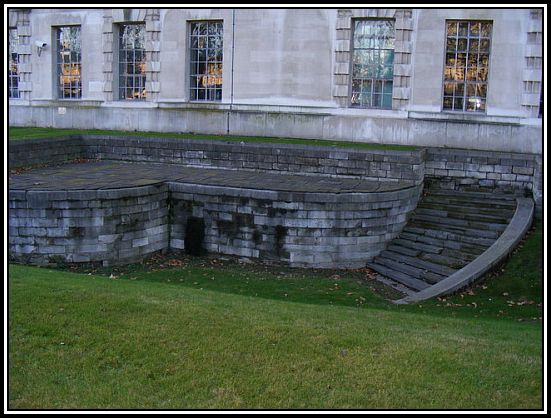 St. Mary’s Steps; photograph taken by Mr. Paul Farmer
St. Mary’s Steps; photograph taken by Mr. Paul Farmer
To the west of The Gardens is The Ministry of Defence. The building was designed by Emanuel Vincent Harris (1876-1971) and built between 1939 and 1959.
 The Ministry of Defence Building
The Ministry of Defence Building
The Gardens were created on the site of the former Privy Garden of the Palace of Whitehall, which was the primary residence of the English monarchs between 1530 and 1698 when most of it was destroyed by fire with the exception of the Banqueting House, which was designed by Indigo Jones (1573-1652) in 1619.
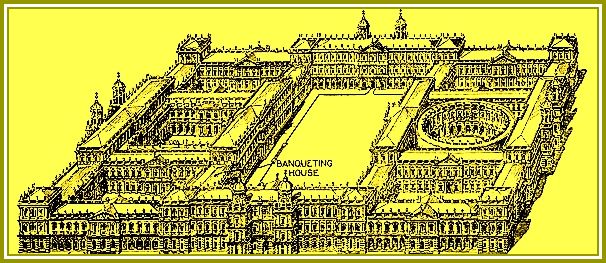 Plan of the Palace of Whitehall
Plan of the Palace of Whitehall
At this time of the fire, the Palace was the largest in Europe with over 1,500 rooms. Unfortunately, a number of works of art were lost in the fire including Hans Holbein the Younger‘s Portrait of Henry VIII, Michelangelo‘s Cupid and Gian Lorenzo Bernini‘s marble Portrait Bust of King Charles I. Although there was some reconstruction of the Palace and plans for its total rebuilding were apparently drawn up, the cost was such that no large scale building took place. In the latter half of the 18th Century, much of the area of the original site was leased used for the building of Town Houses.
The Ministry of Defence Gardens consist of a large raised rectangular lawn with adjacent paths and mature London Planes Trees.
-oOo-
MEMORIALS
There are three Memorials in The Gardens to military people: Major General Charles George Gordon (1833-1885), Marshal of the Royal Air Force Charles Frederick Algernon Portal, 1st Viscount Portal of Hungerford (1893-1971) and Viscount Air Chief Marshal Hugh Trenchard (1873-1956). In addition, there is a Memorial to the Fleet Air Arm.
-oOo-
MAJOR GENERAL CHARLES GEORGE GORDON
aka CHINESE GORDON & GORDON OF KHARTOUM
Major General Charles George Gordon (1833-1885), known as Chinese Gordon and later as Gordon of Khartoum, was an Army Officer and Administrator. Although he saw action during the Crimean War (1853-1856), it was in China that he made his reputation and garlanded the name, Chinese Gordon.
In 1860, Major General Gordon was posted to China as part of the Allied Expeditionary Force that was fighting the Second Opium War. With peace, the Emperor of China appointed Gordon as the Commander of the Ever Victorious Army, a military force led by European Officers. As Commander, he became involved in the Taiping Rebellion (1850-1864) in Southern China, which expanded into a civil war between the Taiping Heavenly Kingdom established by the rebels and the ruling Manchu-led Qing dynasty. Eventually the Ever Victorious Army under Gordon’s command was victorious and brought about the end to the Rebellion.
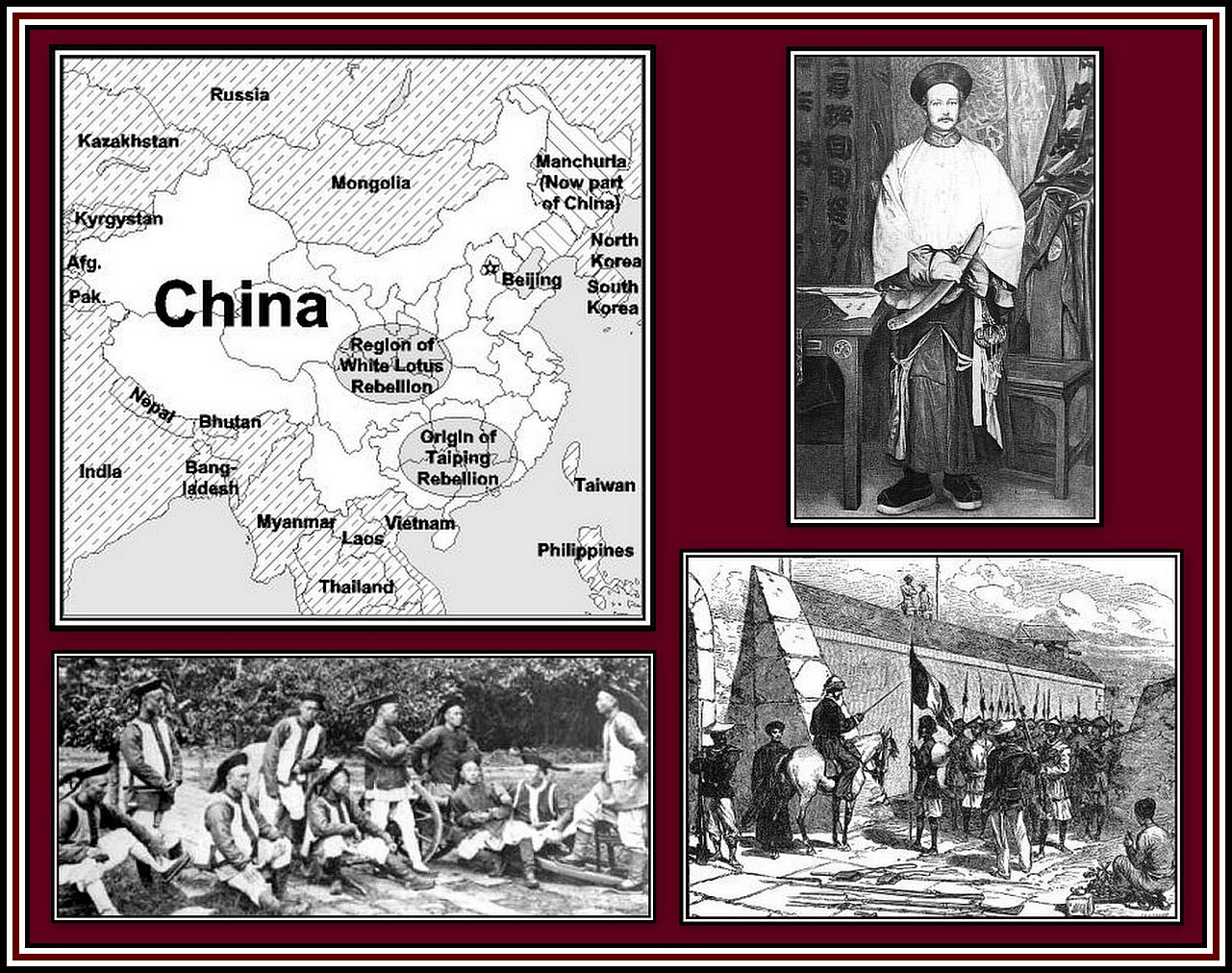 Gordon dressed as a Mandarin and Scenes of the Taiping Rebellion showing the Ever Victorious Army
Gordon dressed as a Mandarin and Scenes of the Taiping Rebellion showing the Ever Victorious Army
-oOo-
Upon Gordon’s return to England, the British Government was unsure what appointment to give him. The administration was unwilling to give him a command of combat troops and in fact he was never given such a command during his career. It was eventually decided in 1865 to post him to Gravesend as Commandant of Engineers in charge of renovating the Lower Thames Forts.
During his time at Gravesend, his father and one of his brothers died. This brought about a great change in Gordon’s behaviour and he involved himself in helpful the poor and the infirm. It is said that he used the majority of his Army salary to fund his social work.
While at Gravesend, Gordon underwent a change in his religious beliefs and attitude:
He was an ardent Christian cosmologist and believed that the Earth was enclosed in a hollow sphere with God’s throne directly above the altar of the Temple in Jerusalem, the Devil inhabiting the opposite point of the globe near Pitcairn Island in the Pacific. He also believed that the Garden of Eden was on the Island of Praslin in the Seychelles.
From Charles George Gordon at Goo Wikipedia
Gordon did not align himself with any one branch of Christianity, but went to a number of churches of different denominations. He was also a believer of Reincarnation.
-oOo-
In 1872, Gordon was sent to inspect the British Military Cemeteries in the Crimea. While in Constantinople, he made the acquaintance of the Prime Minister of Egypt, who opened negotiations for Gordon to serve under the Khedive. Khedive is a term equivalent to Viceroy and was used by Muhammad Ali Pasha (1769-1849), the Governor of Egypt and Sudan and by his successors.
 Portrait of Muhammad Ali by August Couder (1790-1873)
Portrait of Muhammad Ali by August Couder (1790-1873)
In 1873, with the approval of the British Government, Gordon entered into the service of the Khedive. Later, he was appointed as the Governor-General of the Sudan, where he did much to suppress revolts and the Slave Trade. In 1880, greatly fatigued from his efforts in the region, he resigned and returned to England.
-oOo-
In 1884, a revolt broke out in The Sudan against Anglo-Egyptian rule, which was led by Muhammad Ahmad (1844-1885), the religious leader of the Samaniyya Order. In June 1881, he proclaimed himself to be The Mahdi, a Muslim Fundamentalist Leader who was believed to be the messianic redeemer of the Islamic faith. As a result of the revolt, the British Government were urged to send a relief mission with a commander to lead the withdrawl of British and Egyptian troops out of The Sudan and down The Nile.
Although there was great public support for General Gordon to assume the role of commander, the Government was not in favour. The Prime Minister, William Gladstone (1809-1898), was angry with Gordon since he had not followed orders on an earlier occasion. However, in spite of the Government’s position, the public, and Queen Victoria who also supported Gordon, had their way and he was appointed as Governor General of The Sudan. As a result, he set sail for Egypt and arrived in Khartoum in February 1884 with orders to evacuate the troops in an orderly manner. He did not comply with his orders since he did not think that there were a sufficient number of boats to accommodate the troops thereby making the trip up The Nile too dangerous.
After evacuating about 2,500 British civilians, Gordon retained a small group of soldiers and non-military men. While under siege, The Mahdi and Gordon corresponded and attempted to convert the other to his faith. Gordon organized a defence that lasted for almost a year. When news of this reached the UK, it gained him a great deal of admiration and support with the public, but not the Government who had not wished to become entrenched in the revolt. Only when public pressure to act became too great to ignore did the government reluctantly send a relief force. It arrived two days after Khartoum had fallen in January 1885 with the garrison having been wiped out and General Gordon murdered either along with the soldiers or else after capture at the camp of The Mahdi.
Regardless of the circumstances of Gordon’s death, the news was greeted in the UK with a public outcry against Gladstone. A Memorial Service for General Gordon was conducted by the Bishop of Newcastle was held at St. Paul’s Cathedral on 14th March, 1885.
Following his death, statues were erected to his memory in Trafalgar Square, Chatham, Gravesend, Melbourne and Khartoum. In addition, a number of schools were named after him.
 Statue of General Gordon at the School in Surrey named for him; photograph taken by Mr. Jay Heiser
Statue of General Gordon at the School in Surrey named for him; photograph taken by Mr. Jay Heiser
-oOo-
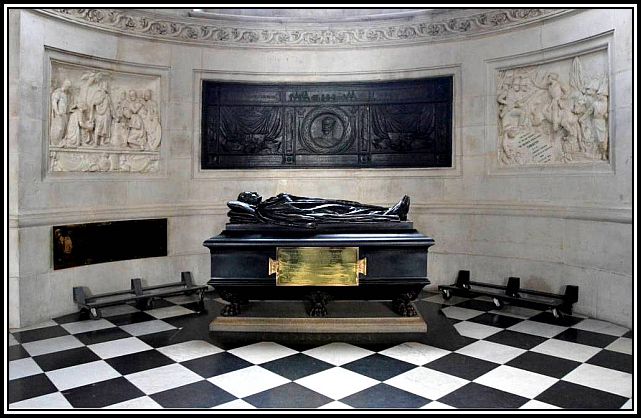 Tomb of General Gordon by Frederick William Pomeroy (1857-1924); this photograph appears on The Victorian Web and was taken by George P. Landow
Tomb of General Gordon by Frederick William Pomeroy (1857-1924); this photograph appears on The Victorian Web and was taken by George P. Landow
The Tomb does not contain the body of General Gordon since it was never found following his death, but is rather a Monument to him.
-oOo-
Originally the statue of General Gordon by Sir William Hamo Thornycroft (1850-1925) was erected in Trafalgar Square between the two fountains in 1888, however it was removed in 1943. In a speech in 1948, opposition leader, Winston Churchill, spoke out in favour of the statue’s return to its original location. However, in 1953 it was reinstalled without part of its pedestal in front of the newly built Ministry of Defence in the Ministry of Defence Gardens where it remains today.
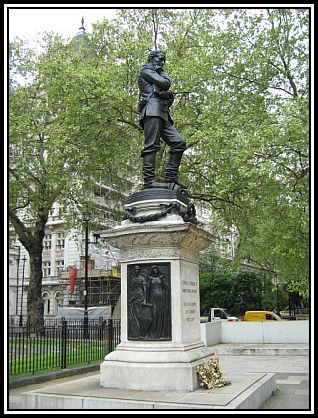 Memorial to Major General Charles George Gordon is by Sir William Hamo Thorneycroft (1850-1925)
Memorial to Major General Charles George Gordon is by Sir William Hamo Thorneycroft (1850-1925)
An identical statue by Thornycroft, but with the pedestal intact, was placed in a small park called Gordon Reserve, which is near Parliament House in Melbourne. This memorial was funded by public donations and unveiled in 1889.
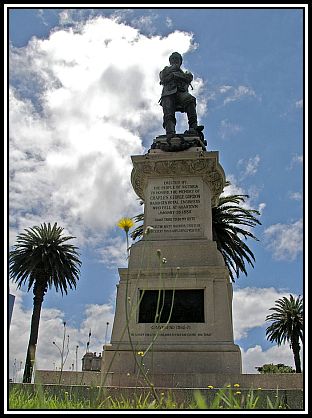 Memorial to Major General George Gordon by Sir William Hamo Thorneycroft in Melbourne
Memorial to Major General George Gordon by Sir William Hamo Thorneycroft in Melbourne
-oOo-
Click here to watch the trailer of the film
In 1966, the film, Khartoum, was released starring Charlton Heston (1923-2008) as General Gordon, Laurence Olivier (1907-1989) as The Mahdi and Ralph Richardson (1902-1983) as William Gladstone. For the film’s depiction of the death of General Gordon, it used as inspiration, the portrait of the event by George W. Joy (1844-1925).
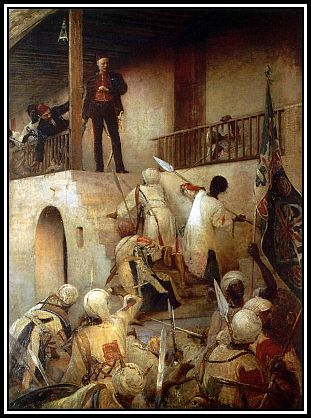 General Gordon’s Last Stand by George W. Joy
General Gordon’s Last Stand by George W. Joy
-oOo-
Click here to watch the BBC documentary, Gordon of Khartoum
-oOo-
Viscount Hugh Montague Trenchard (1873-1956) was a British Army officer who did a great deal to ensure the establishment of the Royal Air Force (RAF).
While an Army Officer, Trenchard saw service in India and in South Africa during the Boer War. During The War, he became partially paralysed and returned to the UK. While in Switzerland, following a crash while bobsleighing, his paralysis amazingly disappeared. Soon after he returned to military service.
Trenchard learned to fly in 1912 and was later appointed second in command of the Central Flying School. During the First World World, he held positions in the Royal Flying Corps.
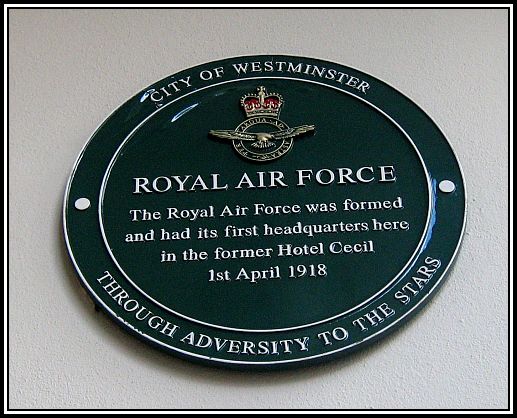 Plaque commemorating where the RAF came into being
Plaque commemorating where the RAF came into being
In 1918, the RAF was formed and he served for a short time as the first Chief of the Air Staff, but soon took command of the Independent Air Force in France.
In March 1919, Trenchard was appointed for the second time as Chief of the Air Staff by Winston Churchill and was active in securing the future of the Royal Air Force during this time. He continued to hold this position until 1st January, 1930.
At the request of Prime MinisterRamsey MacDonald (1866-1937), Trenchard was appointed the Commissioner of the Metropolitan Police and held the post between 1930 and 1935. He introduced separate career paths for the lower and higher ranks along the military system and also founded Hendon Police College where future higher ranking personal were trained.
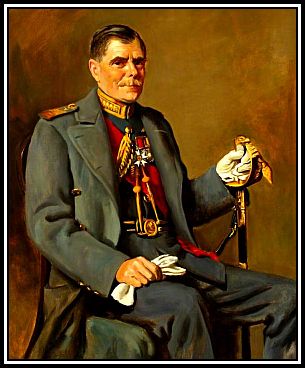 Portrait by John Leigh-Pemberton (1911-1997)
Portrait by John Leigh-Pemberton (1911-1997)
Viscount Trenchard died in February 1956 and his ashes are buried in Westminster Abbey in the Battle of Britain Chapel that he helped create together with Air Chief Marshal, Sir Hugh Dowding.
-oOo-
A Memorial to Viscount Trenchard was unveiled in The Ministry of Defence Gardens in July 1961 by Prime Minister Harold MacMillan (1894-1986).
The Memorial consists of a statue that was produced by the sculptor, William McMillan (1887-1977) and designed by Albert Richardson (1880-1964) who also was responsible for the design of the pedestal.
-oOo-
CHARLES FREDERICK ALGERNON PORTAL
Charles Frederick Algernon Portal, Viscount Portal of Hungerford (1893-1971) was a senior Royal Air Force pilot who became Marshall of the Royal Air Force (RAF).
 As Marshall of the RAF, 1947 (Photograph taken by Mr.
As Marshall of the RAF, 1947 (Photograph taken by Mr.
Viscount Portal began his service in the First World War as a dispatch rider in the Royal Engineers. He was quickly promoted to Corporal and then commissioned as a Second Lieutenant within weeks of joining. In 1915, he transferred to the Royal Flying Corps (RFC) and was awarded the Military Cross in 1917 and promoted to temporary Lieutenant Colonel by June 1918.
Between the World Wars, Viscount Portal remained in military service and became Air Vice Marshal in 1937 and was appointed Director of Organization at the Air Ministry later in the year. September.
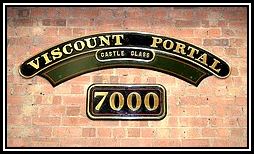 Nameplate of Viscount Portal, a Castle Class Steam Train (No. 7000-7037), built in May 1946 and withdrawn from service in December 1963
Nameplate of Viscount Portal, a Castle Class Steam Train (No. 7000-7037), built in May 1946 and withdrawn from service in December 1963
Soon after the start of the Second World War, Portal became Commander-in-Chief of Bomber Command. In this position, he advocated Strategic Area Bombing of German industrial areas, a policy that was supported by Viscount Trenchard. This same policy was already in place in Germany where the Luftwaffe was targeting British cities. At this time, he was knighted.
In 1940, he was promoted to Chief of the Air Staff, a post he held for rest of the War and was also knighted in recognition of his services. In his various positions, he accompanied the Prime Minister, Winston Churchill, to all the major conferences also attended by the Josef Stalin (1878-1953) and President Franklin D. Roosevelt (1882-1945).
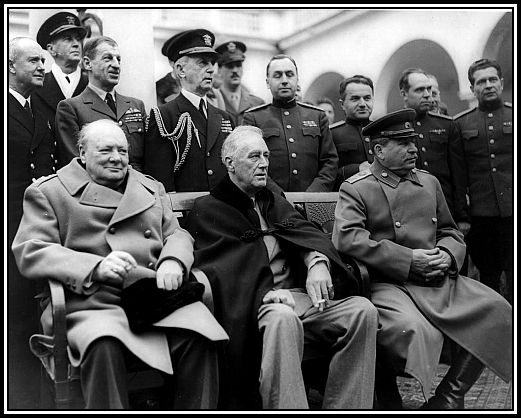 Standing behind Mr. Churchill at the Yalta Conference, February 1945 (Charles Portal 1947 by Unknown)
Standing behind Mr. Churchill at the Yalta Conference, February 1945 (Charles Portal 1947 by Unknown)
At the end of the Second World War, Viscount Portal worked at a highly secret atomic energy directorate. Later, he entered business and became Chairman of British Aluminium for a short time, but resigned after losing the battle to stop a hostile take-over. In 1960, he was elected Chairman of the British Aircraft Corporation.
Viscount Portal died in on 22nd April, 1971 and his ashes are buried in Funtington churchyard in Sussex. His name is included among the six leaders of the RAF during the Second World War that appear beneath The Battle of Britain Memorial Window in Westminster Abbey, which was unveiled in 1989. A funeral service was held for Viscount Portal in The Abbey in July 1971.
A statue of Viscount Portal was unveiled in The Ministry of Defence Gardens in May 1975 by the former Prime Minister, Harold Macmillan. The statue was designed by Oscar Nemon (1906-1985) and stands on a triangular slate pedestal, which is said to evoke the shape of an aerofoil.
-oOo-
FLEET AIR ARM MEMORIAL
The Fleet Air Arm Memorial was produced by the sculptor James Butler (1931- ) and was unveiled in 2000 by Prince Charles, Prince of Wales. The Memorial is in memory of the more than six thousand members of the Royal Navy Air Service who perished since the First World War. Almost two thousand of those that were killed in action, were never recovered.
The Memorial consists of a bronze figure of Daedalus, who according to Greek legend, created feather wings in order for him and his son, Icarus, to escape King Minos of Crete. Icarus flew too close to the sun, which melted the wax used to hold the wings together by Daedalus and Icarus fell to his death in the sea, leaving his father to grieve.
The statue is of Daedalus as a modern pilot standing on a column, which in turn rises out of a plinth that is reminiscent of the prow of a ship.
-oOo-
OTHER MEMORIALS OF SIGNIFICANCE
Although not found in the Victoria Embankment Gardens, The Royal Air Force Memorial and The Battle of Britain Monument are presented here since they have associations with Viscount Trenchard and therefore seem (to me) to be ideally suited for presentation here.
In addition, The Royal Air Force Bomber Command Memorial, which is close by in Green Park, also appears here.
-oOo-
ROYAL AIR FORCE MEMORIAL
The Royal Air Force (RAF) Memorial has come to be considered as the official Memorial of theRAF and related services and is dedicated to the memory of the RAF casualties of the First World War. A committee was set up in 1919, but it was not until 1920 when Lord Hugh Cecil (1869-1956) and the Air Chief Marshal of the time, Hugh Trenchard, become involved that the project gained traction.
 The Royal Air Force Memorial and Whitehall Steps on the Victoria Embankment
The Royal Air Force Memorial and Whitehall Steps on the Victoria Embankment
The Memorial was designed by Sir Reginald Blomfield (1856-1942) and is found at Whitehall Steps on the Victoria Embankment between Hungerford and Westminster Bridges and close to the Ministry of Defence. It was unveiled in July 1923 by the then Prince of Wales who later became Edward VIII.
The Memorial is of a tapering Portland Stone pylon with a zodiacal globe bearing a gilded eagle, taken from the RAF‘s badge, with raised wings and which was sculpted by William Reid Dick (1879-1961). There are inscriptions on the pylon, some of which were added after the Second World War, which were unveiled by Viscount Trenchard in September 1946.
-oOo-
THE BATTLE OF BRITAIN MONUMENT
The Battle of Britain Monument was erected on the Embankment and unveiled in the 18th September, 2005 by Prince Charles and Camilla, the Duchess of Cornwall. The date for its unveiling was specifically chosen to coincide with the 65th anniversary of The Battle of Britain.
The Monument was sculptured by Paul Day and cast by the Morris Singer Art Foundry, which is the oldest established fine art foundry in the world. Many famous statues and sculptures in London were cast at the Foundry including the lions and fountains in Trafalgar Square, the statue of Eros and the doors of The Bank of England.
The Monument uses a paneled granite structure that is 82 feet (25 metres) in length, which was originally designed as a smoke outlet for Underground Trains when they were powered by steam engines.
There is a walkway cut obliquely through the middle of the structure, which is lined with panels of high relief sculpture in bronze depicting scenes from The Battle of Britain.
 Relief Sculptures towards The Victoria Embankment
Relief Sculptures towards The Victoria Embankment
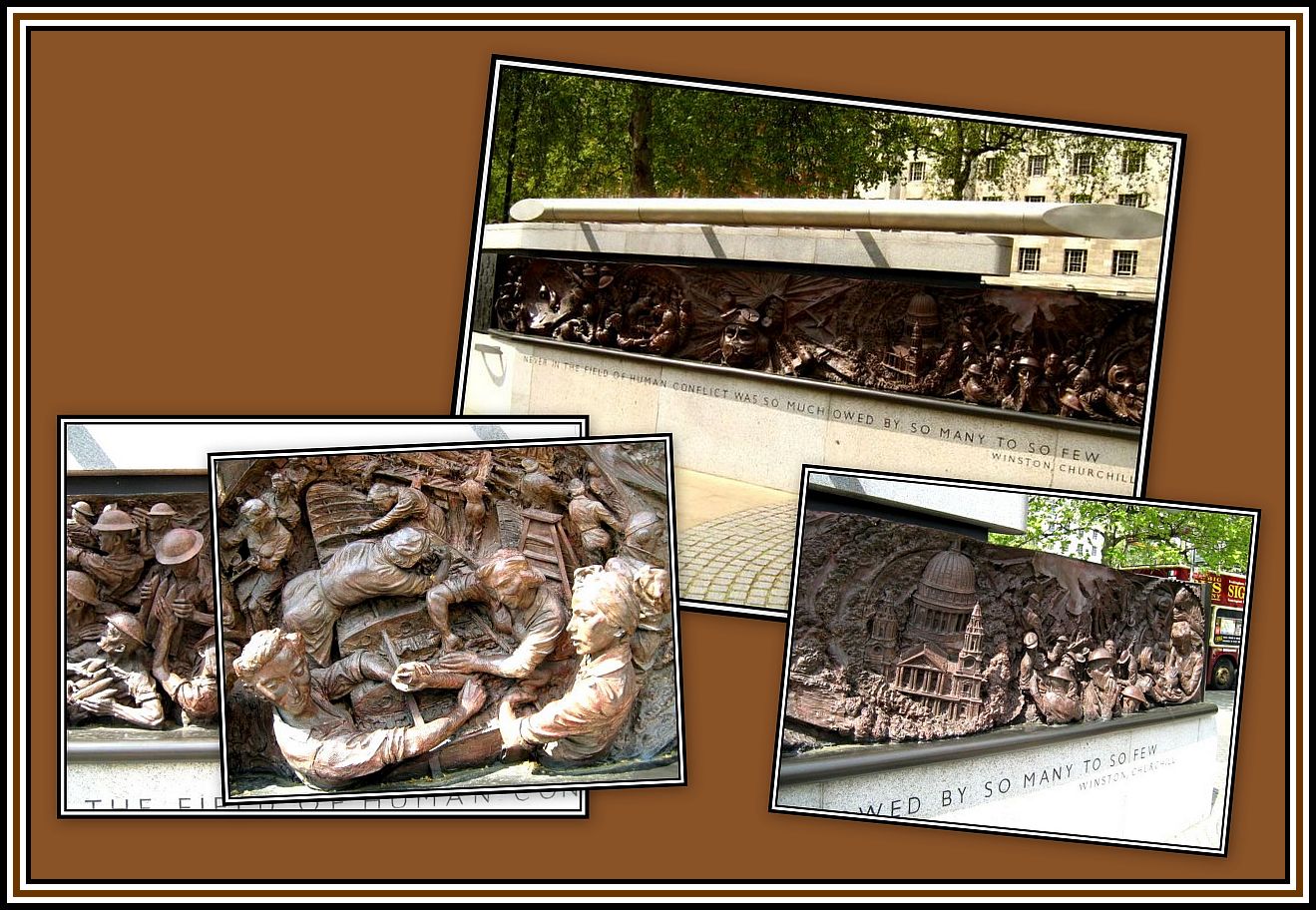 Relief Sculptures towards the River
Relief Sculptures towards the River
The Monument also displays the famous quote of Winston Churchill (1874-1965), which states:
Never in the field of human conflict was so much owed by so many to so few
-oOo-
Perhaps the most startling feature of The Monument is the life sized sculpture of an air crew scrambling for their aircraft. The sculptor has received much praise for its detail with particular reference to the faces of the air crew, who display a wide array of emotion, as to those shown on the ground.
-oOo-
-oOo-
Bronze plaques listing the names of the 2,936 airmen and grounds crew from 14 allied countries who died during The Battle appear on The Memorial.
-oOo-
THE ROYAL AIR FORCE BOMBER COMMAND MEMORIAL
Although not found in either of the Victoria Embankment Gardens or on The Embankment, the Royal Air Force Bomber Command Memorial deserves, I believe, to be mentioned here. Lord Portal was commander-in-chief of Bomber Command during the Second World War.
The Royal Air Force Bomber Command Memorial was unveiled by Queen Elizabeth II in June 2012 in Green Park in London. The Memorial is of Portland Stone and was designed by Liam O’Connor.
Inside the Memorial is a bronze sculpture measuring nine feet (2.7 metres) of seven aircrew who appear to have just returned from a mission and is the work of the sculptor, Philip Jackson (1944- ).
The Memorial was built as a remembrance of the 55,573 aircrew from the UK, Canada, Czechoslovakia, Poland and other countries of the Commonwealth, and to the civilians killed during air raids.
The costs of the building and maintenance of the Memorial were raised by public appeal and from donations by specific benefactors. Unfortunately the Memorial was subjected to vandalism in 2013.
——oooOOOooo——
FINAL WORD
In front of the Ministry of Defence building facing Whitehall is another small garden area where there is a row of commemorative statues of Field-Marshals and Viscounts who were active in the Second World War. Here may be found the statue of Field-Marshal Montgomery (1887-1976), First Viscount of El Alamein.
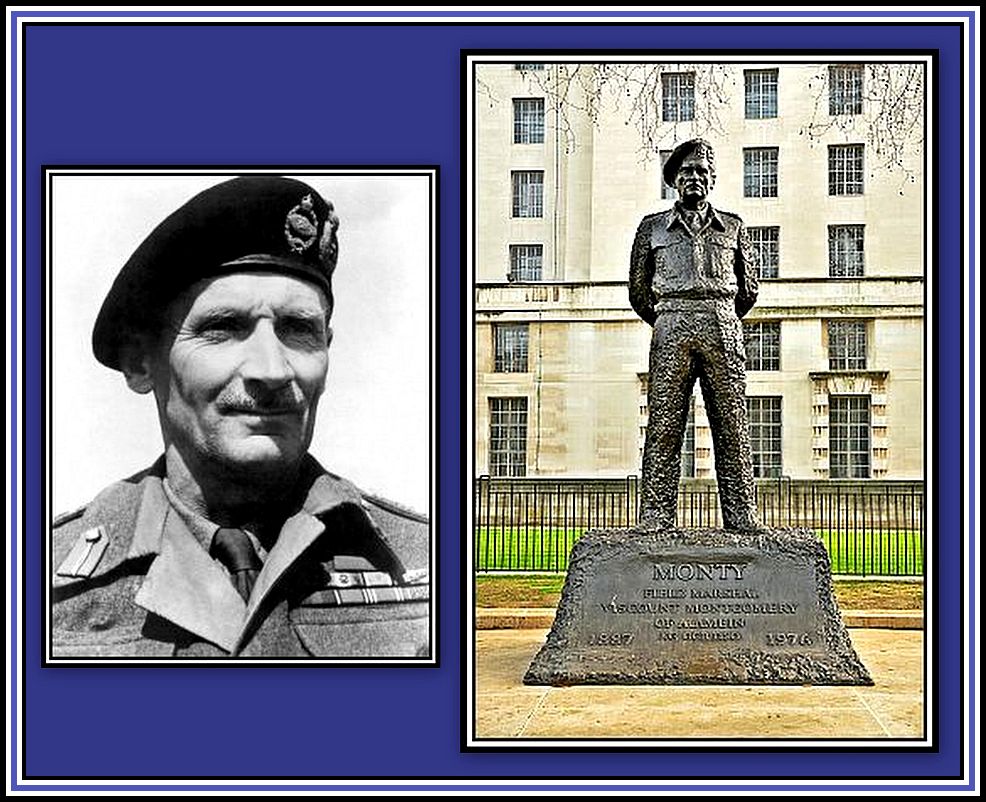 Monty – Field Marshall Montgomery
Monty – Field Marshall Montgomery
In 1959, a statue of Sir Walter Raleigh (~1554-1618) by William McMillan was placed here, but was later moved to Greenwich in 2001.
-oOo-
Readers can TWEET their LIKES & DISLIKES to me at
or
make comments on the Website’s FACEBOOK PAGE
or
consider leaving a Comment below.
——oooOOOooo——
ACKNOWLEDGEMENTS
I would like to thank Mr. Paul Bland for his help in the writing of this piece.
——oooOOOooo——
Click here to GO to PART EIGHT: CHILDHOOD MEMORIES OF THE VICTORIA EMBANKMENT GARDENS
——oooOOOooo——
Click here to RETURN to PART SIX: VICTORIA EMBANKMENT GARDENS – WHITEHALL GARDENS & WHITEHALL COURT
——oooOOOooo——
Click here to RETURN to A SERIES OF WALKS ALONG THE EMBANKMENT Home Page
——oooOOOooo——
Click here to GO to AN ADDITIONAL SET OF POSTCARDS OF OLD LONDON: THE EMBANKMENT by DAVE HILL
——oooOOOooo——
Click here to GO to ISAMBARD KINGDOM BRUNEL
——oooOOOooo——
Click here to RETURN to the TABLE OF CONTENTS
——oooOOOooo——


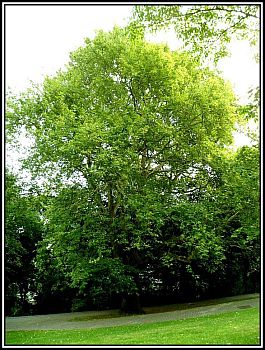
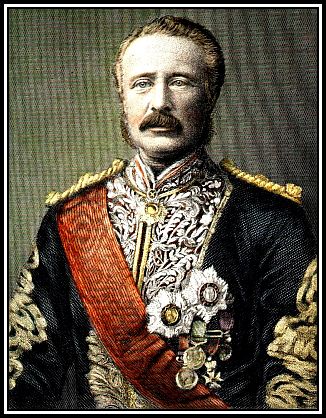
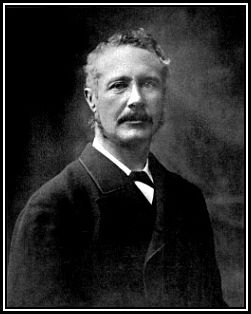
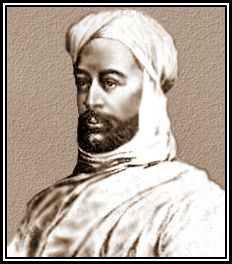
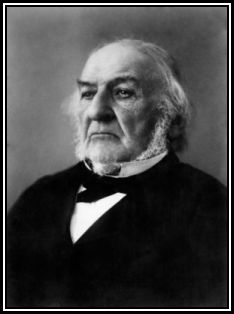
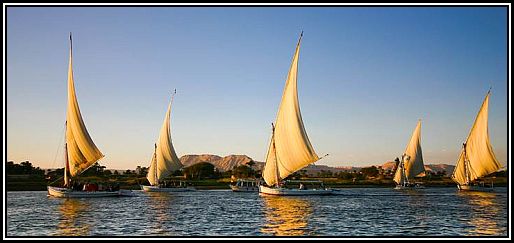

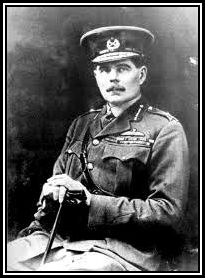
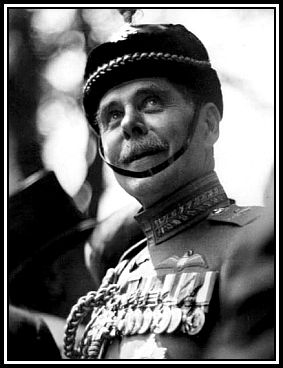
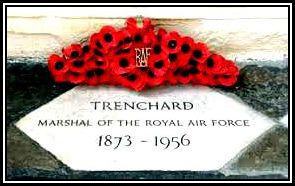
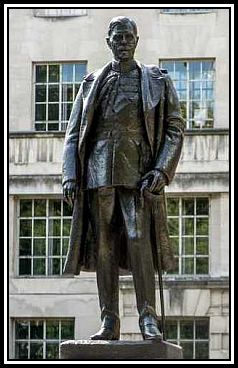
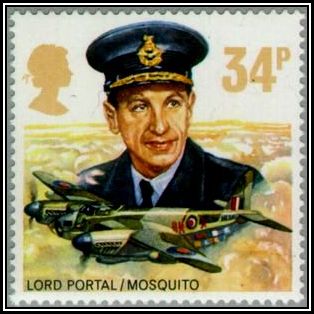
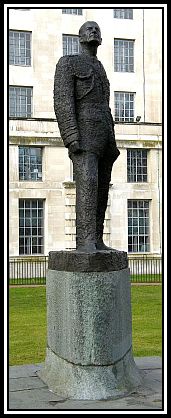
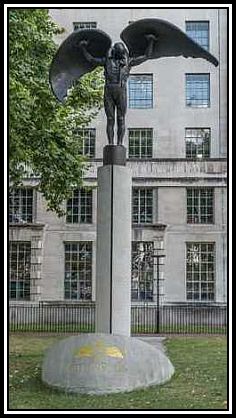
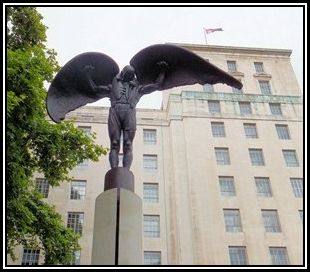
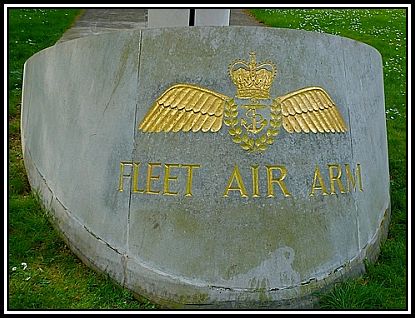
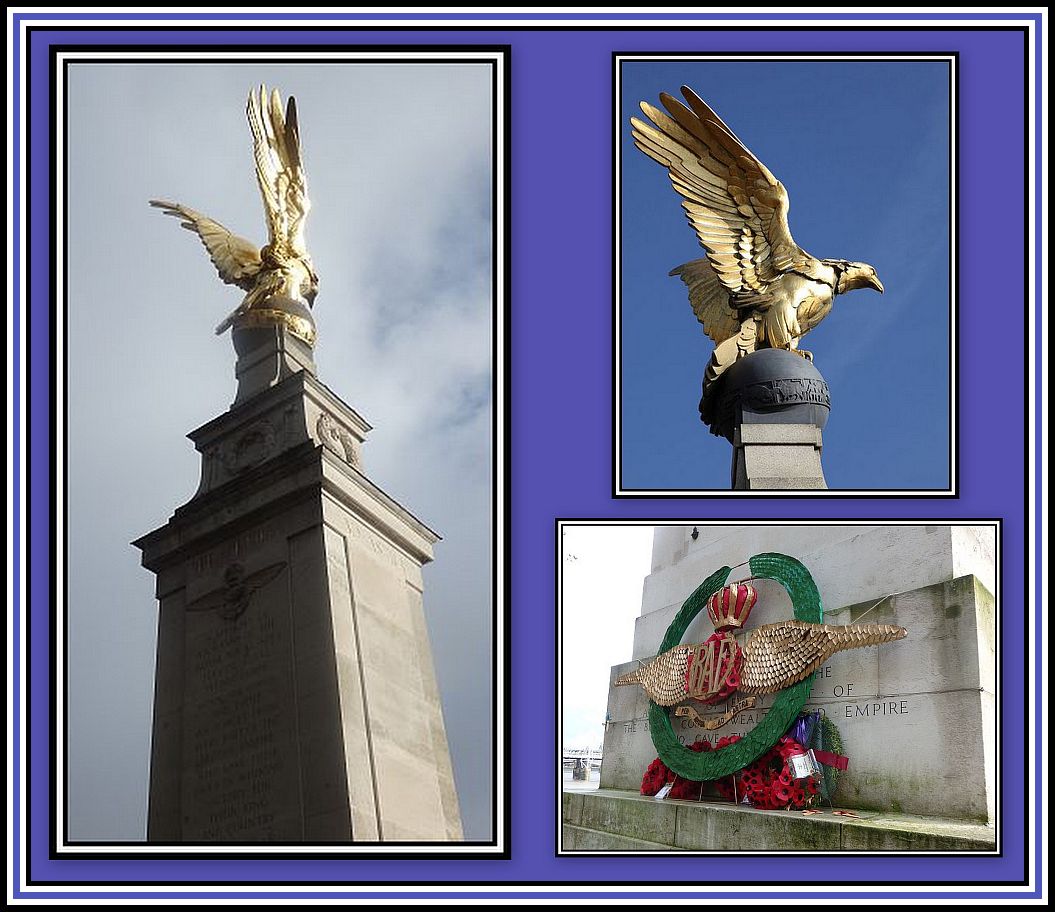

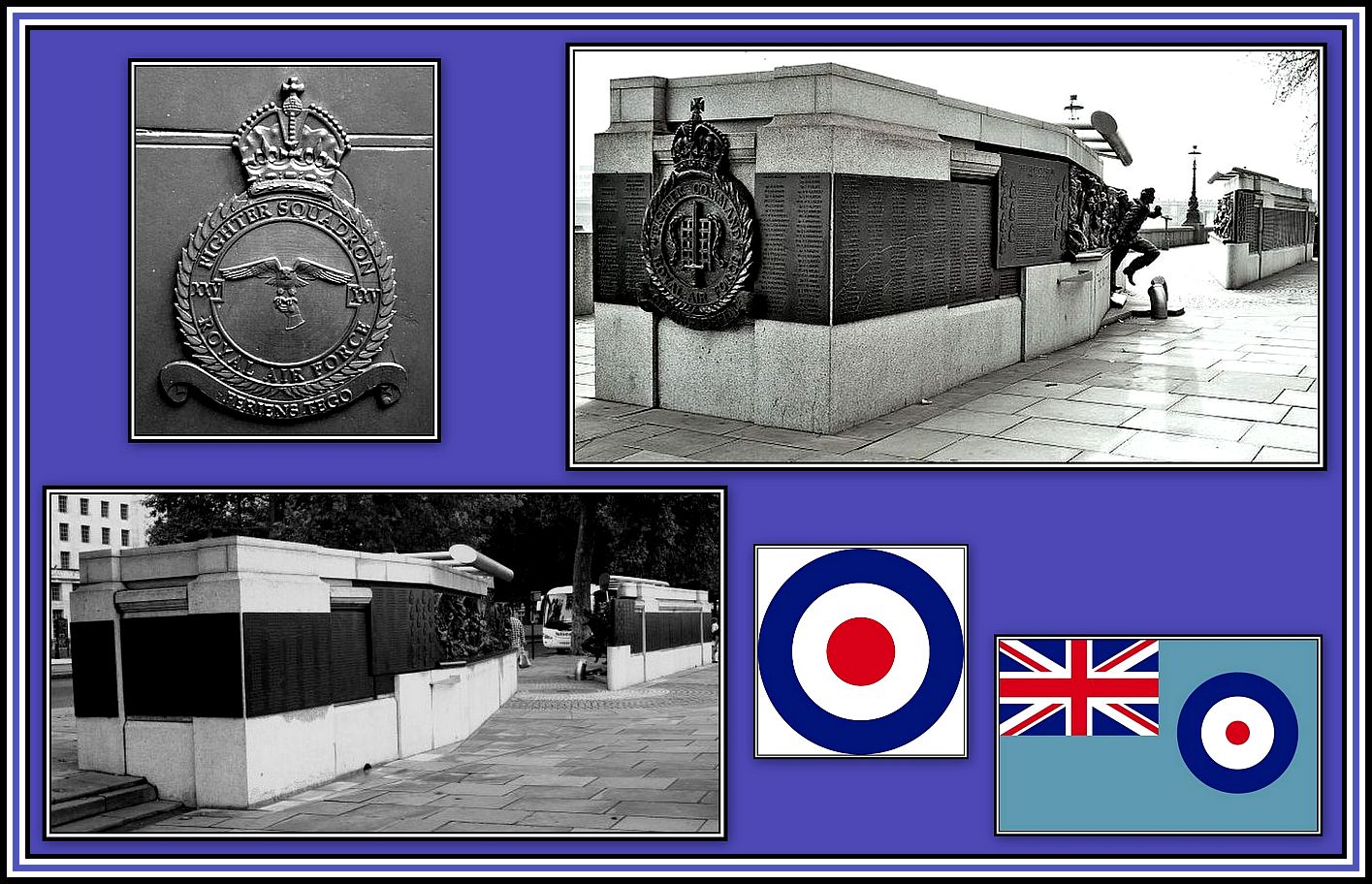
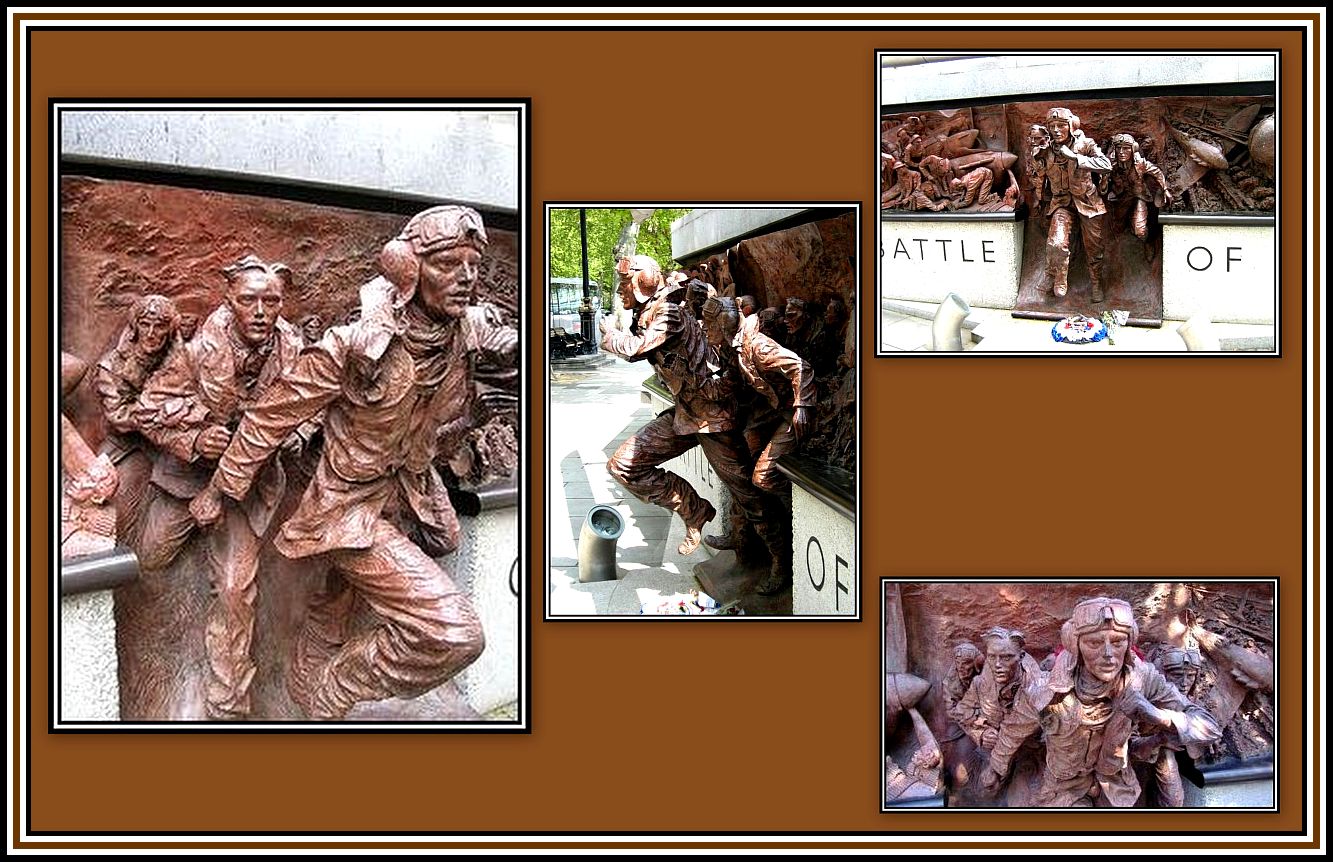

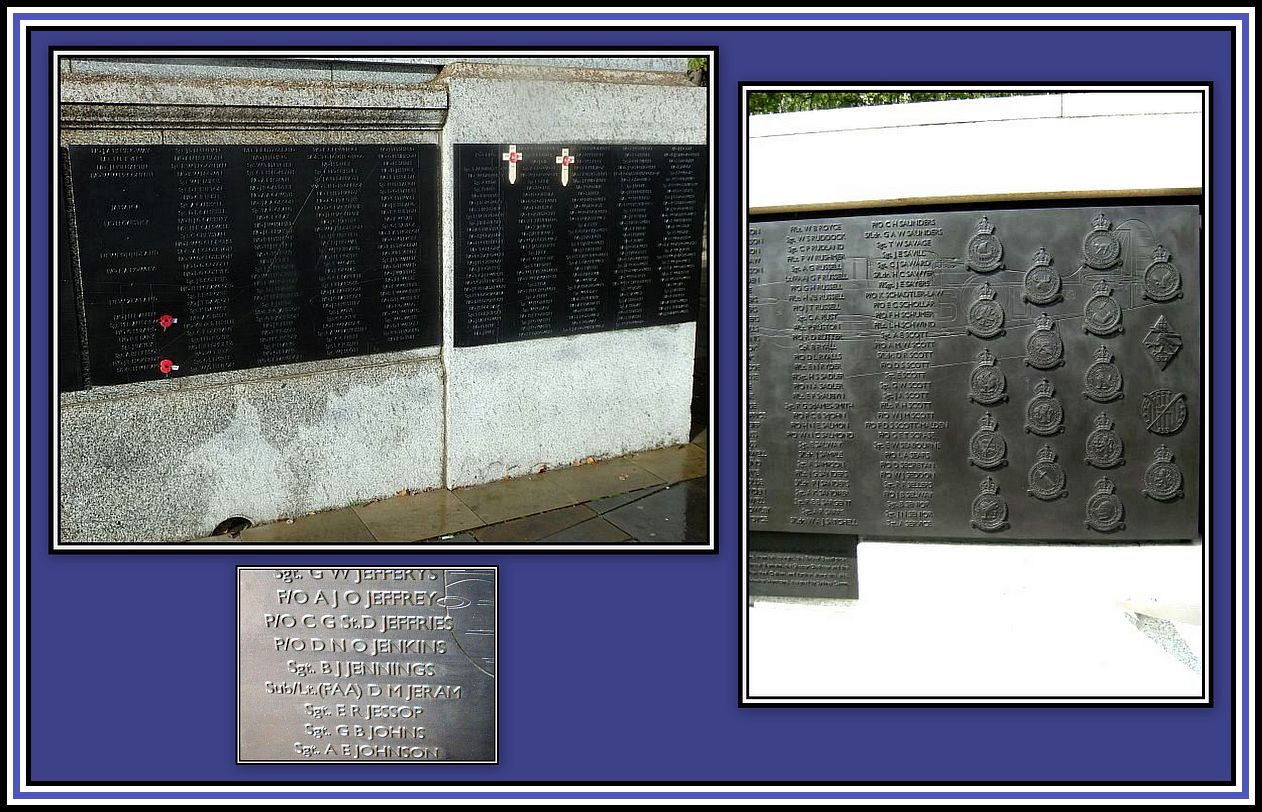
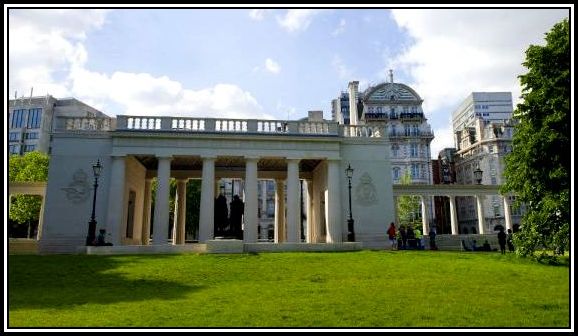
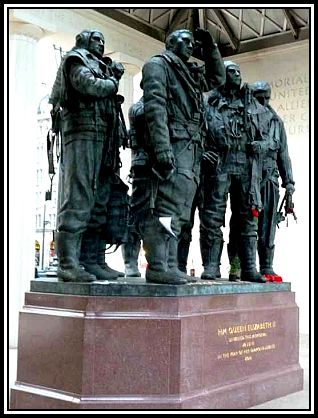
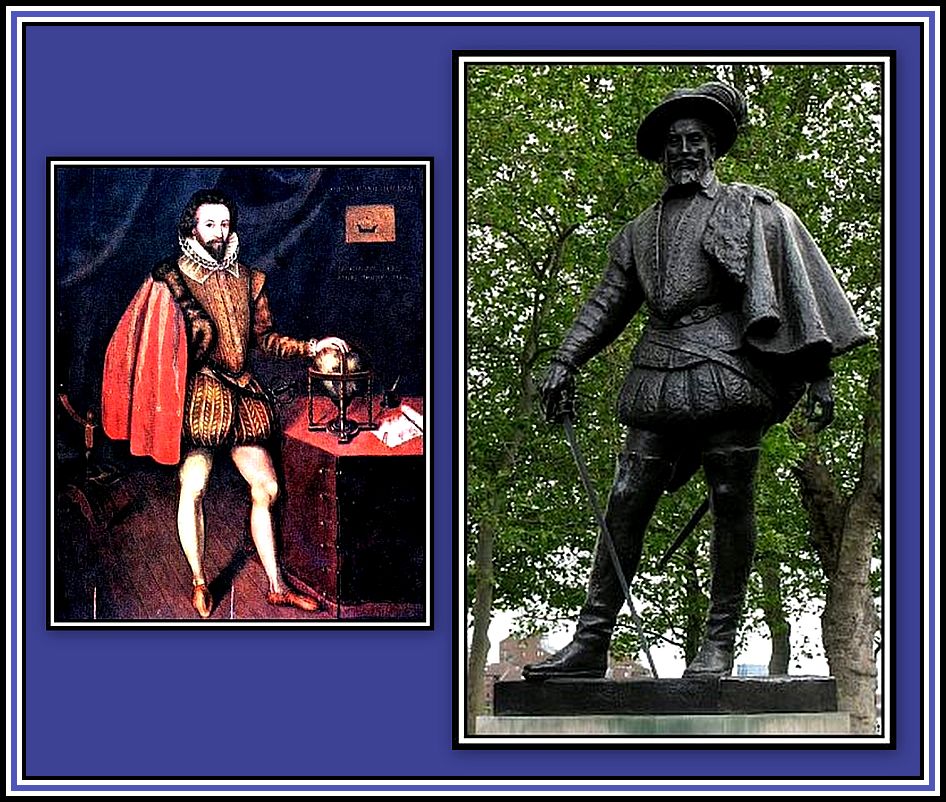

Hi Charles. Just thought I would mention.the RAF memorial at Capel le Ferne. Between Folkestone and Dover. It has recently reopened after a refurbishment. It is not very well known, even in Uk! See it on Google Earth.
again, another masterpiece, your work always brings me wonder what I do with my computer, and feeling most incompetent with my doodlings. I just hope you get the exposure you deserve, and everyone can get to see the series
Clair and Fouad
Great stuff. So much to read, so many great portraits, buildings and scenes. Thanks for the series.
Ken
You know Charles, when I was a young girl (around the time of the dinosaurs) I was fascinated by the Mahdi and Gordon and the strange relationship between them. This segment brought me back to those old times, thank you. Also, the bas- reliefs from the battle of Britain are very impressive. Thank you again for bringing parts of history back to us in such a nice visual way. We all need reminders.
I noticed, as a former RAF Halton graduate, that you have not mentioned the the fact that Trenchard was instrumental in the forming of the training schools for young men and boys that have produced thousands of highly qualified and skilled tradesmen for the RAF and a number of other commonwealth countries over the years. Unfortunately it appears the RAF Apprenticeship programs have been disbanded since I was one of Trenchard’s Brats between 1960 and 1963. I’m not sure when this program met it’s demise but feel it is a shame that something so influential in producing the above mentioned tradesmen should be allowed to simply fizzle out the way it did.
Terrific history. Well done!
However. Field Marshall Montgomery was idolized by most. After his success at Alamein (which incidentally was planned by Alexandra) – thus Monty was acclaimed a War Hero. At a time when the nations moral was extremely low. Unfortunately, his following missions were a total disaster. These are never mention.